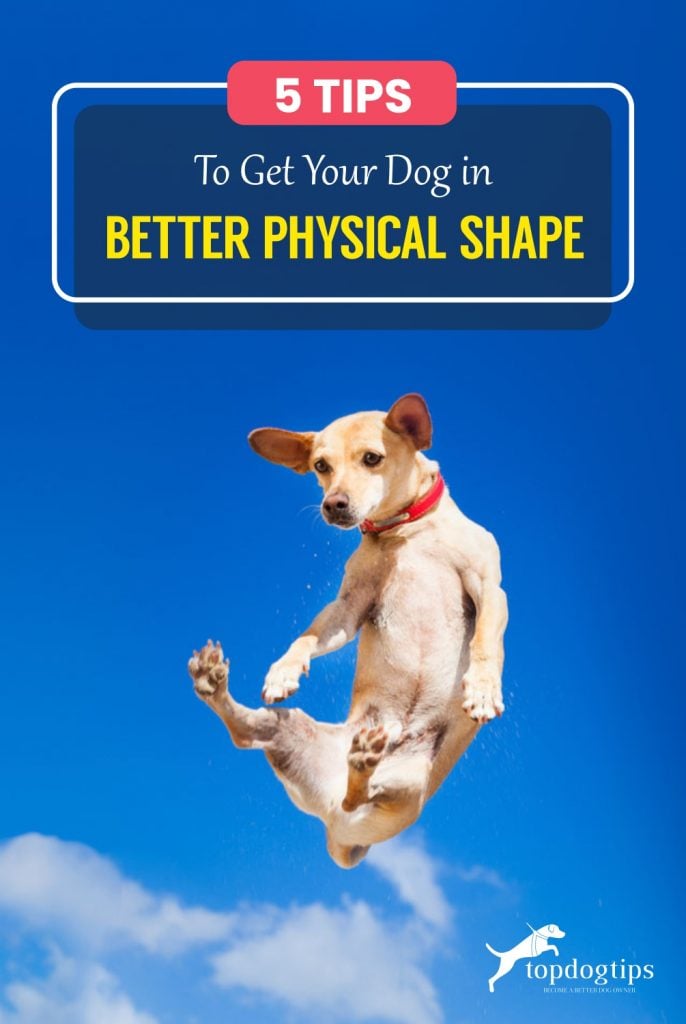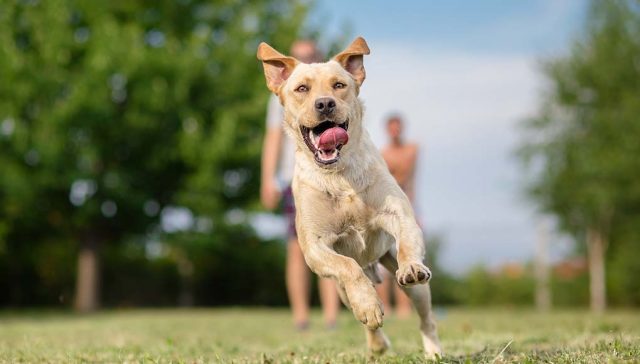
Table of Contents
As dog owners, we tend to take our dogs to the vet for their annual wellness exam and to get their heartworm medication, hoping that’s the only time during the year we need to see them.
And since dogs can’t complain — and probably wouldn’t even if they were in pain — we assume that they’re perfectly healthy until something seems a bit off.
For example, they might not get around as easily as they used to or start limping.
Oftentimes, those issues prompt a trip to the vet, where the diagnosis might be something like arthritis or joint pain.
What’s one key way to prevent that sort of pain? The answer is ensuring they’re in better physical shape to prevent injuries and health conditions.
One top indicator of poor physical shape is if your dog is overweight.
Especially if your dog doesn’t appear overweight, you may not even realize it until underlying health conditions come to the surface.
Even minor weight gain can be problematic for certain breeds. Dogs that are overweight are at a higher risk for not only arthritis, but also diabetes, breathing problems, high blood pressure and cancer.
To give your canine companion a healthy, happy life, read on for five tips to get your dog in better physical shape.
Get Your Dog in Better Physical Shape With These Tips
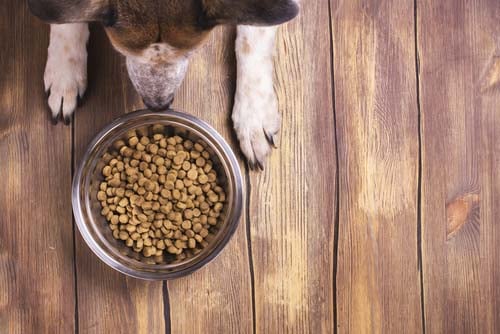
1. Reevaluate Their Dog Food
One main culprit that could be contributing to your dog’s weight could be their dog food — not just the type of food, but the amount of food their eating.
Since exercising too little and eating too much leads to weight gain, it is also important to take your dog’s activity level into account.
If your dog is older and isn’t as active as they once were, you should reevaluate their diet since they’ll be expending fewer calories. Your veterinarian should be able to provide you with specific advice.
It’s also important to remember to avoid feeding your dog table scraps. You might think this is an easy way to show them that you love them, but it can actually be hurting them.
Dogs don’t digest nutrients the same way we do, and some human foods can even harm dogs.
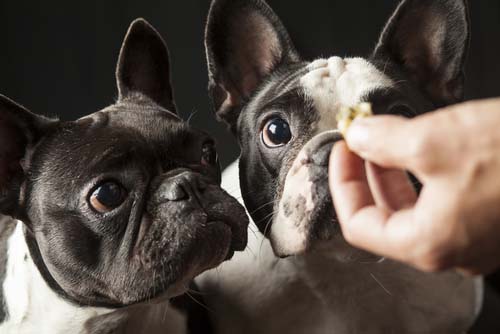
2. Consider Healthier Treats
While cutting out the table scraps is a good start, taking a different approach to dog treats might be necessary as well.
Some store-bought dog treats are pretty high in calories and fat, which is probably why dogs think they’re so delicious. But that doesn’t mean they’re healthy.
If you replace some of those treats with fresh fruit and veggies, like carrots and apples, you may be amazed at how much your dog actually loves them, not just for the taste but for the crunch.
Just be sure to stay away from raisins, grapes, onions, avocados, nuts, and fruits with pits.
Additionally, if you’re training your dog by using treats as a reward, you might find yourself giving more treats than you normally would.
Be sure to reduce their kibble or dog food a bit to compensate for those extra treats.
Remember that dogs don’t need treats. They’re nice for reinforcing good behavior and for satisfying their desire to chew, but a well-balanced, healthy diet is much more important.
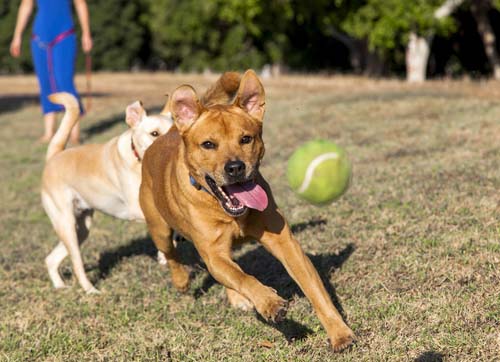
3. Offer Lots of Opportunities for Exercise
Since exercise is needed to lose weight, and a different approach to dog treats, offering opportunities to stretch their legs is a win-win situation.
Don’t assume the only option is a walk around the neighborhood, either.
There are lots of things you can do with your dog, including:
- Swimming
- Running
- Hiking
- Agility courses
- Playing fetch
- Running around the dog park
While increasing the amount of exercise your dog gets, try to be realistic about it.
If your schedule doesn’t allow it, consider asking someone else in the family to help out or hiring someone to exercise your dog for you.
Just be sure not to let your excuses become your dog’s.
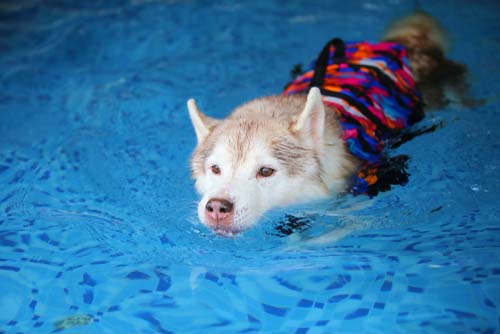
4. But Exercise Safely
It is important to note, however, that dogs sometimes have so much fun exercising that they don’t know when to stop.
This can lead to a variety of health complications that can be especially risky for dogs that are obese.
Dogs that are overweight should be eased into an exercise program instead of jumping right into it.
If you’re a runner and are looking forward to the opportunity to keep your pup in shape by running with them, don’t get too excited too early.
As much energy as puppies have, they shouldn’t run on hard surfaces until they’re at least a year old. That’s because it can damage their growing joints.
Similarly, older dogs should be run with caution as they may have weaker hips and knees that could make running painful and dangerous.
For them, stick to walking, swimming, and activities that have a low impact on the joints.
Additionally, keep an eye on their behavior and slow down if they’re excessively panting or if they seem uncomfortable.
Sometimes, the pavement alone can hurt a dog’s paws since it can become excessively hot during the day.
If you have any concerns about safely exercising your dog, it’s good practice to talk to the vet before starting an exercise routine.

5. Get Them a Companion!
If you start to notice that your dog isn’t as excited about their daily walks as normal, or doesn’t want to play fetch any more, you could always switch up their exercise routine and see what happens.
After all, they could just be bored.
But they may also be depressed, especially if you’re gone for long periods during the day. different approach to dog treats, whether it be in human form or in canine form.
Maybe another dog is what you need to keep your dog happy and healthy. Especially if you have a fenced-in yard, allowing them to play and chase each other could be great exercise for them.
They also benefit from having each other during the day while you’re gone.
Of course, this is not a decision to be made lightly since some dogs are more protective of their space and of their families.
But it may be worth a try. You know your dog. If this sounds like an option, consider taking your dog to a local dog park to see how they interact with other dogs.
If it goes well, take it a step further by inviting a friend with a dog over for a playdate to see how your dog does with a new dog in your home.
Noticeable Benefits
Once your dog starts getting more exercise and eating more healthily, you may notice differences in their behavior within a week if you stick to it.
That’s because regular exercise helps your dog use their energy for something positive instead of destructive.
That means no more digging holes, no more chewing shoes, and no more excessive barking out the window.
Being aware of your dog’s weight isn’t just to prevent illnesses; it’s also so you can rule out any metabolic conditions that actually cause them to be overweight.
Weight change is often one of the first things veterinarians check when a dog is ill, so it makes sense that the dog owners should keep it on their radar as well.
READ NEXT: How to Slim Down an Overweight Dog (30-Day Diet Plan)
